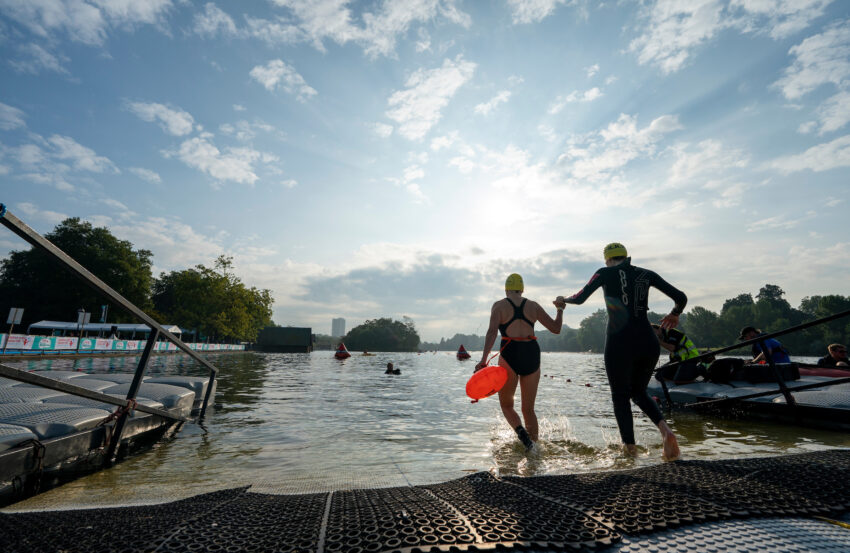5 reasons why runners should try outdoor swimming
As a runner, you already enjoy being active outdoors. Have you ever considered adding outdoor swimming to your activities? Here are a few reasons to give it a go!
As a runner, you already enjoy being active outdoors. Have you ever considered adding outdoor swimming to your activities? Not only could it help you become a better runner, it also has a lot of other benefits. Here are a few reasons to give it a go, plus some tips on getting started.
1. Recovery
While running is fantastic exercise, there is no doubt the constant pounding is hard on your body. Your running training will only be effective if you give yourself chance to recover, and outdoor swimming is perfect for that. Outdoor swimming doesn’t have to be hard work. You could, for example, lie on your back, relax and gently kick your legs. The easy movement and slight water pressure will feel like a gentle massage for your legs. If the water is cold, it will also help reduce inflammation. Scheduling a swim following a hard run or a race will help get you running again sooner. It’s much easier to do a “recovery swim” than a “recovery run” – that latter may even be a flawed concept.
2. Cross-training
Most runners understand the benefits of cross-training. In essence, doing some other kind of activity than running helps maintain and build your strength and fitness while allowing your body a break from the pounding and repetitive movements of running. You may already swim in a pool for cross-training, but why not do your swimming outside? There is more space, fresher air and no lane rage. Swimming is good for your core, upper body strength and mobility, plus it feels good.
Note that you might tackle a cross-training swim differently to a recovery swim, but even a hard swim can help your legs feel better.
 Swimmers entering the water for Swim Serpentine, London 2021
Swimmers entering the water for Swim Serpentine, London 20213. Mental health, wellbeing and resilience
By running regularly, you will already be helping support your mental health and wellbeing, but did you know you might get additional benefits from outdoor swimming, especially swimming in cooler water? Cold water immersion triggers the release of hormones in the body that result in a natural ‘high’. Moreover, deliberately putting your body through the physical stress of cold water immersion could help increase your tolerance of stress generally and boost your ability to cope with life’s ups and downs. Finally, getting into open water requires a certain mental fortitude. Practising this could help when you need to draw on your mental strengths at the end of a hard race.
4. New opportunities
Have you ever thought about combining your love of running with outdoor swimming in a swimrun? Swimrun is a relatively new adventure sport that takes you across rugged and beautiful landscapes through running and swimming. Improving your outdoor swimming will also stand you in good stead if you ever want to do a triathlon.
5. It’s fun
We’ve left the most important reason until last. Outdoor swimming is a sociable and fun activity that often involves as much chatting and cake eating as swimming. Running can sometimes be a lonely activity, but we recommend you always swim with someone else. While this is primarily for safety, it makes swimming more social. Also, outdoor swimming is an activity the whole family can enjoy: you can enjoy quality family experiences and improve your running at the same time.
How to get started outdoor swimming
Outdoor swimming can be enjoyed at any time of the year. Swimmers will even break ice to get their swimming fix. However, swimming in cold water involves more risks due to cold water shock and hypothermia. If you do start in winter, make sure you familiarise yourself with these hazards. Here are four ways to get started.
Option 1: Supervised swimming venue
Advantages of supervised swimming venues include reassurance about water quality, lifeguards and the opportunity to ask for advice. Many venues run introductory sessions, which can be a great way to get started. Increasing numbers of venues now open in the winter.
Please see our list of venues here. Alternatively, you could try an unheated lido.
Option 2: Find a friendly swimming group
Ask around, search on Facebook or visit the Mental Health Swims website. There are open water swimming groups around the country, usually run by volunteers, most of which will warmly welcome you and look after you while you overcome your nerves (which are entirely normal for beginners) and learn how to stay safe.
Option 3: Sign up for a guided wild swim
As increasing numbers of people qualify as open water swimming coaches, new businesses are springing up to help novices get started in open water. These usually operate in small groups and can be a great way to learn the basics.
For example, check out Dip Advisor, run by Outdoor Swimmer editor Ella Foote.
Option 4: Buy a wild swimming guidebook
I’d only recommend this last option if you can swim confidently in open water. Guidebooks are great for finding good swimming spots but remember these are often in remote or difficult to access places and you need to take responsibility for your own safety.
Lead image: Athlete Linford Christie taking part in Swim Serpentine 2021
Click here for more guidance on staying safe in open water.
For regular outdoor swimming inspiration, sign up for Outdoor Swimmer’s email newsletter.









